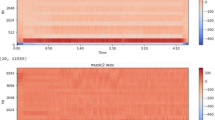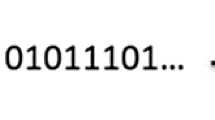Abstract
The denoising of audio signal and quality enhancement has a substantial contribution in speaker identification, audio transmission, hearing aids, microphones, mobile phones, etc., Hence, an efficient denoising method is required to enhance the audio signal quality securely. A robust multilayered convolutional neural network (MLCNN)-based auto-CODEC for audio signal denoising which is utilizing the mel-frequency cepstral coefficients (MFCCs) has been proposed in this research. The MLCNN takes the input as MFCC with different frames from the noise-contaminated audio signal for training and testing. The proposed MLCNN model has been trained and tested as 80:20 ratios for the available MIT database. After the training, the proposed method has been validated. From the validation, it has been found that the proposed MLCNN model provides an accuracy of 93.25%. The performance of MLCNN has been evaluated and compared with the reported methods using short-time objective intelligibility (STOI), perceptual evaluation of speech quality (PESQ) and cosine similarities. From the performance comparisons, it has been found that the proposed MLCNN model outperforms other models. From the cosine similarity, it has been proved that MLCNN provides high security level which can be used for many secure applications.












Similar content being viewed by others
Code availability
Custom code.
References
Ali MA, Shemi PM (2015) An improved method of audio denoising based on wavelet transform. Proceedings of the IEEE International Conference on Power, Instrumentation, Control and Computing. 53:1–6
Haneche H, Boudraa B, Ouahabi A (2020) A new way to enhance speech signal based on compressed sensing. Measurement. https://doi.org/10.1016/j.measurement.2019.107117
Welk M., Bergmeister A., Weickert J (2015) Denoising of Audio Data by Nonlinear Diffusion, In: Scale Space and PDE Methods in Computer Vision. Lecture Notes in Computer Science. 3459; 598–609.
Yu, G. Bacry, E. Mallat, S (2007) Audio Signal Denoising with Complex Wavelets and Adaptive Block Attenuation. In:Proceedings of the IEEE International Conference on Acoustics, Speech and Signal Processing, 863–869.
Ali A (2019) Impulse noise reduction in audio signal through multi-stage technique. Engineering Science and Technology, an International Journal 22(2):629–636
Pohjalainen, J. Ringeval, F. Zhang, Z. Schuller, B. (2016). Spectral and Cepstral Audio Noise Reduction Techniques in Speech Emotion Recognition, In: Proceedings of the 24th ACM International Conference on Multimedia. 670 - 674.
Davoudabadi MJ, Mina A (2017) A fuzzy-wavelet denoising technique with applications to noise reduction in audio signals. Journal of Intelligent & Fuzzy Systems 33(4):2159–2169
Das N, Chakraborty S, Chaki J, Padhy N, Dey N (2020) Fundamentals, present and future perspectives of speech enhancement. Int J Speech Technol. https://doi.org/10.1007/s10772-020-09674-2
Michelashvili M, Wolf L (2019) 2019. Audio Denoising with Deep Network Priors, CoRR
Bhat GS, Shankar N, Reddy CKA, Panahi IMS (2019) A Real-Time Convolutional Neural Network Based Speech Enhancement for Hearing Impaired Listeners Using Smartphone. IEEE Access 7:78421–78433
Candes, E,J. Li, X. Ma, Y. Wright, J (2011) Robust principal component analysis?. Journal of the ACM. 58(3); 11:01–11:37.
Chin YH, Wang JC, Huang CL, Wang KY, Wu CH (2017) Speaker identification using discriminative features and sparse representation. IEEE Trans Inf Forensics Secur 12:1979–1987
Wilson, K.W. Raj, B. Smaragdis, P. Divakaran, A. (2009). Speech denoising using nonnegative matrix factorization with priors, In: Proceedings of the IEEE International Conference on Acoustics, Speech and Signal Processing. 32; 4029–4032.
Wang JC, Lee YS, Lin CH, Wang SF, Shih CH, Wu CH (2016) Compressive sensing-based speech enhancement. IEEE/ACM Transactions on Audio, Speech and Language Processing 24(11):2122–2131
Tan K, Wang D (2019) Learning complex spectral mapping with gated convolutional recurrent networks for monaural speech enhancement. IEEE/ACM Transactions on Audio, Speech and Language Processing 28:380–390
Alamdari N, Azarang A, Kehtarnavaz N (2020) Improving deep speech denoising by Noisy2Noisy signal mapping. Appl Acoust. https://doi.org/10.1016/j.apacoust.2020.107631
Chen, Z. Watanabe, S. Erdogan, H. Hershey, J.R. (2015). Speech enhancement and recognition using multi-task learning of long short term memory recurrent neural networks, In: Proceedings of the 16th Annual Conference of the International Speech Communication Association, 3274–3278.
Sun, L. Du, J. Dai, L. Lee, C. (2017). Multiple-target deep learning for LSTM-RNN based speech enhancement, In: Proceedings of the Hands-free Speech Communications and Microphone Arrays Conference, 136–140.
Xu Y, Du J, Dai LR, Lee CH (2014) An experimental study on speech enhancement based on deep neural networks. IEEE Signal Process Lett 21(1):65–68
Pandey A, Wang D (2019) A new framework for CNN-based speech enhancement in the time domain. IEEE/ACM Transactions on Audio, Speech and Language Processing 27(7):1179–1188
Fu SW, Wang TW, Tsao Y, Lu X, Kawai H (2018) End-to-end waveform utterance enhancement for direct evaluation metrics optimization by fully convolutional neural networks. IEEE/ACM Transactions on Audio, Speech and Language Processing 26(9):1570–1584
Vincent P, Larochelle H, Lajoie I, Bengio Y, Manzagol PA (2010) Stacked denoising autoencoders: Learning useful representations in a deep network with a local denoising criterion. Journal of Machine Learning Research 11:3371–3408
Shivakumar P.G. Georgiou, P.G (2016) Perception optimized deep denoising autoencoders for speech enhancement. In: Proc. INTERSPEECH. 3743–3747.
Chandra B, Sharma RK (2014) Adaptive Noise Schedule for Denoising Autoencoder. In Neural Information Processing. ICONIP 2014. Lect Notes Comput Sci 8834:535–542
Hao, X. Shan, C. Xu, Y. Sun, S. Xie, L. (2019) An Attention-based Neural Network Approach for Single Channel Speech Enhancement, In: Proceedings of IEEE International Conference on Acoustics, Speech and Signal Processing (ICASSP). 6895–6899.
Liang R, Kong F, Xie Y, Tang G, Cheng J (2020) Real-Time Speech Enhancement Algorithm Based on Attention LSTM. IEEE Access 8:48464–48476
Vincent, P. Larochelle, H. Bengio, Y. Manzagol, P.A. (2008). Extracting and Composing Robust Features with Denoising Autoencoders, In: Proceedings of the International Conference on Machine Learning, 1096–1103
Yildirim O, Tan RS, Acharya UR (2018) An efficient compression of ECG signals using deep convolutional autoencoders. Cognitive Systems Research 53:198–211
Zhao Z, Liu H, Fingscheidt T (2019) Convolutional Neural Networks to Enhance Coded Speech. IEEE/ACM Transactions on Audio, Speech and Language Processing 27(4):663–678
Tiwari V (2010) MFCC and its applications in speaker recognition. International Journal on Emerging Technologies 1(1):19–22
Thiruvengadam, (2017) Speech/Music Classification using MFCC and KNN. International Journal of Computational Intelligence Research 13(10):2449–2452
Vidyadhar U, Sastry PA (2019) An Overview of Restricted Boltzmann Machines. J Indian Inst Sci. https://doi.org/10.1007/s41745-019-0102-z
Taal CH, Hendriks RC, Heusdens R, Jensen J (2011) An Algorithm for Intelligibility Prediction of Time-Frequency Weighted Noisy Speech. IEEE Trans Audio Speech Lang Process 19(7):2125–2136
Rix AW, Beerends JG, Hollier MP, Hekstra AP (2001) Perceptual evaluation of speech quality (PESQ)-a new method for speech quality assessment of telephone networks and codecs. Proceedings of the IEEE International Conference on Acoustics, Speech and Signal Processing 2:749–752
Wang D, Chen J (2018) Supervised Speech Separation Based on Deep Learning: An Overview. IEEE/ACM Transactions on Audio, Speech and Language Processing 26(10):1702–1726
Pascual, S. Bonafonte, A. Serra, J. (2017). SEGAN: Speech Enhancement Generative Adversarial Network, In: Proceedings of INTERSPEECH. 3642–3646.
Author information
Authors and Affiliations
Corresponding author
Ethics declarations
Conflicts of interest
We hereby declare that there is no conflict of interest in this research work/paper.
Additional information
Publisher's Note
Springer Nature remains neutral with regard to jurisdictional claims in published maps and institutional affiliations.
Rights and permissions
About this article
Cite this article
Raj, S., Prakasam, P. & Gupta, S. Multilayered convolutional neural network-based auto-CODEC for audio signal denoising using mel-frequency cepstral coefficients. Neural Comput & Applic 33, 10199–10209 (2021). https://doi.org/10.1007/s00521-021-05782-5
Received:
Accepted:
Published:
Issue Date:
DOI: https://doi.org/10.1007/s00521-021-05782-5




